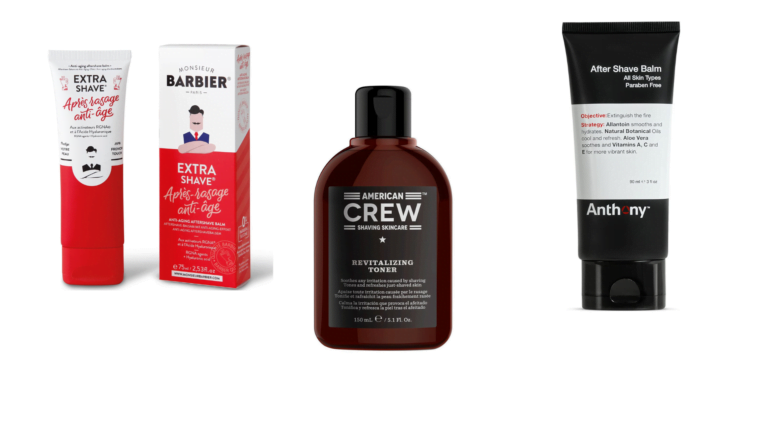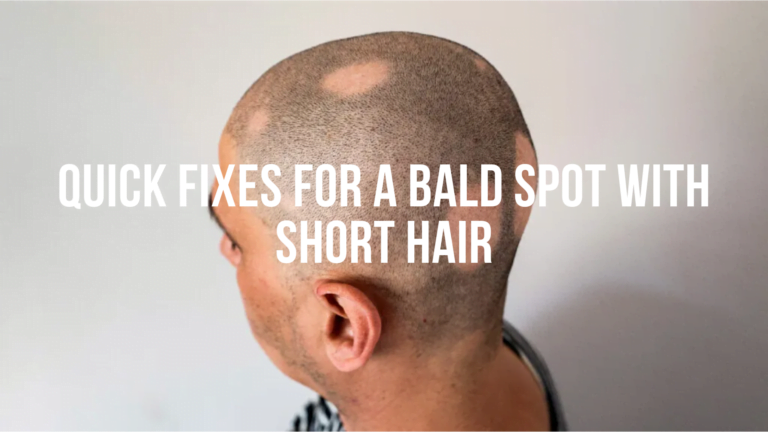This post may contain affiliate links. If you click one, I may earn a commission at no cost to you. As an Amazon Associate I earn from qualifying purchases.
The shaving brush is the essential accessory for a good old-fashioned shave. How do I use a shaving brush? How do I shave with it? These are common questions for beginners, for whom the ritual of shaving is sometimes a mystery.
But all it takes is a few simple steps to achieve a quality shave. A shave with a shaving brush that’s comfortable, efficient and safe.
Once you’ve chosen the shaving brush that’s best suited to your needs and desires (take a look at our How to choose a shaving brush guide to help you make the right choice), you’re ready to discover our tips for a successful badger shave.
Table of Contents
PREREQUISITES
Before you start your first traditional shaving session, make sure you have all the accessories you need, and that they’re all fully functional.
- A safety razor, cabbage trimmer or straight razor with a clean, sharp blade for a clean, snag-free cut. A safety blade can be used between 2 and 7 times (depending on the quality of the steel, the type of hair, its maintenance…), a cabbage cutter blade must be leathered before each shave and the life of a multi-blade refill depends, as for safety blades, on several factors (in our store, we offer a blade sharpener and cleaner that will make them last up to 10 times longer!)
- A shaving towel can help prepare your skin for shaving by soaking it in warm water and applying it to your head for a few minutes. A shaving towel moistened with cold water can also help cleanse your head and tighten pores after shaving.
- Aftershave care such as moisturizing lotion, aftershave or alum stone. Aftershave products are ideal for soothing razor burn and treating any micro-cuts. Alum stone is unbeatable for cuts, but it dries out the skin, so be sure to use it in conjunction with a moisturizer.
- Finally, bring your shaving brush, your favorite soap or shaving cream and a shaving bowl.
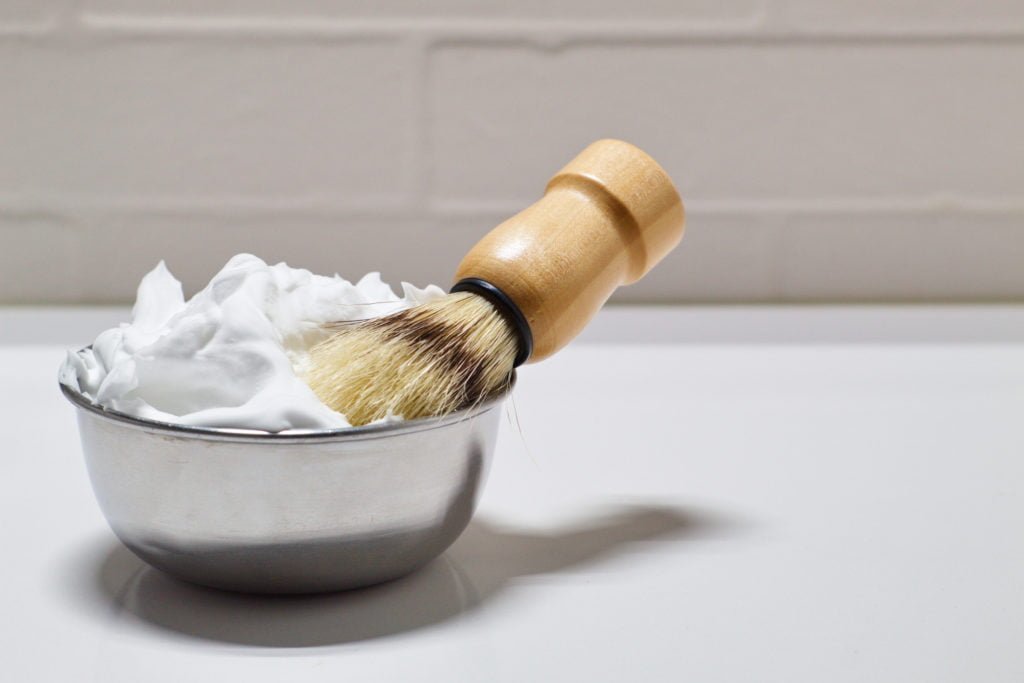
THE DIFFERENT STAGES OF BADGER SHAVING
Step 1: Moisten your shaving brush and head
Run your shaving brush, bristles down, under a stream of lukewarm water. Then, gently sweep your shaving brush over the skin of your head to moisten the areas to be shaved.
To help you moisten your shaving brush properly, you can use a shaving bowl filled with lukewarm water. Dip the shaving brush into the bowl, but be careful not to submerge it completely, as the bristles are held together by glue, and too much exposure to water can render the glue less effective, especially if the water is hard.
By soaking in water, the bristles of the shaving brush will soften and enable you to create a beautiful lather more quickly. Don’t leave the brush immersed in water for too long.
Once the shaving brush is moistened, remove it from the bowl and squeeze out the excess water in your sink. A shaving brush overloaded with water won’t produce a good lather, which will be too liquid rather than creamy. Don’t shake too hard, and don’t press too hard.
Step 2: Load the shaving brush with soap or cream
Your shaving brush is now ready to receive your shaving soap or cream. If you’re using shaving soap, run your shaving brush round the surface of the shaving soap several times. The tips should be well impregnated with soap. This step is called “loading“, as the tuft is loaded with soap or cream.
If you’re using a cream, you can either scoop up a dab with your shaving brush (or place it in the center of the tuft), or put the desired amount directly into the bowl you’ll use to build your lather (depending on whether you’re using a cream in a bowl or a tube).
Step 3: Use your shaving brush to create a beautiful lather
The most delicate and most important step, setting up your shaving brush will produce a beautiful lather of optimal density and texture. To do this, empty the water from the shaving bowl into your sink, making sure to leave a few drops to help the foam rise.
Work the soap or cream into the bowl in circular motions until you obtain a foam that looks like Chantilly cream: dense and creamy. Here’s a tutorial showing how to do it.
Feel free to add a little warm water or soap/cream as required. It’s all a question of dosage and skill! If the mousse forms large bubbles, there’s too much water. If the foam doesn’t rise and sticks to the bottom, there’s not enough water.
Step 4: Apply foam to your head
Before applying the foam to your head, make sure it is properly prepared. Ideally, you should shave directly after a shower, as the hot water softens the beard hair and opens the skin pores.
You can also use a warm shaving towel on your skin for a few minutes. Various pre-shave care products can be used to moisturize the skin and soften the hair before shaving. They often provide additional protection.
Once your skin is ready, apply the foam with the shaving brush, using back-and-forth strokes (avoid circular movements whenever possible). It’s advisable to take your time. The aim here is to massage your skin and straighten your hair. The lather should be evenly distributed.
Now you’re ready for the most delicate part: shaving! As shaving is generally done in two or even three passes, don’t forget to rewet your head and apply lather between each pass. After shaving, rinse your head with cold water and move on to the aftershave phase.
Step 5: Clean the shaving brush
Properly caring for your shaving brush after every shave will extend its life, prevent hair loss and maintain the effectiveness of your bristles. It’s an essential step that must be carried out with the utmost care and attention.
Wring out the shaving brush
Once you’ve finished rinsing, squeeze the shaving brush and shake it in the sink to remove as much water as possible. Then gently wipe the shaving brush with a soft, non-abrasive towel.
Air-dry the shaving brush
To allow the remaining water to drain off optimally, it is essential to leave the shaving brush to dry upside down on a suitable support.
Gravity allows the last traces of water to fall away naturally. If your shaving brush is stored upside down, the water won’t be able to evacuate easily, so it stays at the bottom of the tuft and risks damaging it quickly.
Finally, if you’re used to storing your shaving brush away from humidity, or if you’re about to go on a trip, make sure your brush is completely dry! Leaving a damp shaving brush to macerate in a case is not a good idea! In fact, it’s the best way to damage your shaving brush.
Maintain your shaving brush regularly
Don’t hesitate to give your shaving brush a thorough cleaning at least once every two months, or once a month if you’re too lazy. We recommend using a shaving brush cleaning product, which will help to clean the bristles by removing traces of limescale, soap scum and cream.
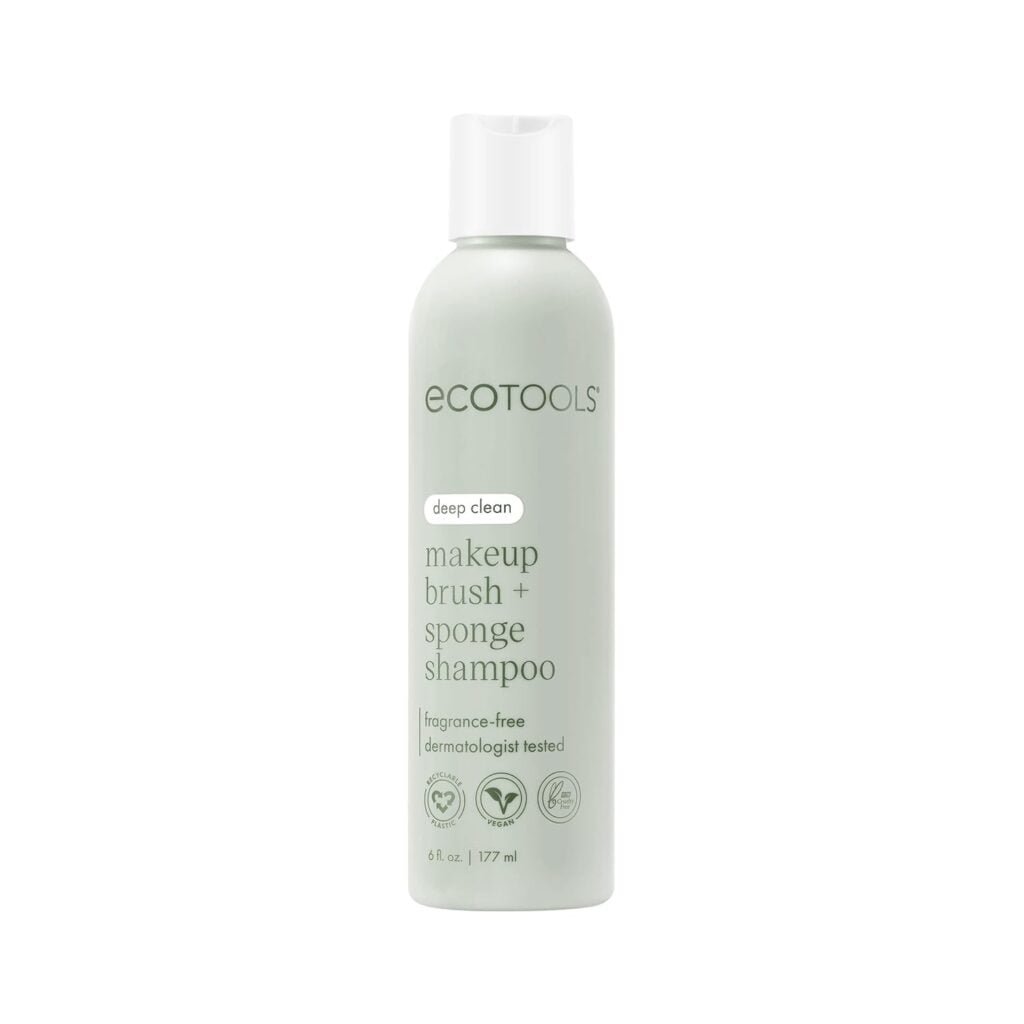
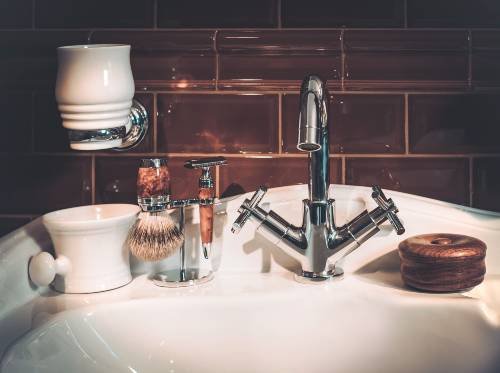
If you’re curious about the top shaving brushes available and want to make an informed choice, don’t forget to read our comprehensive guide on the best shave brushes for head shaving.


